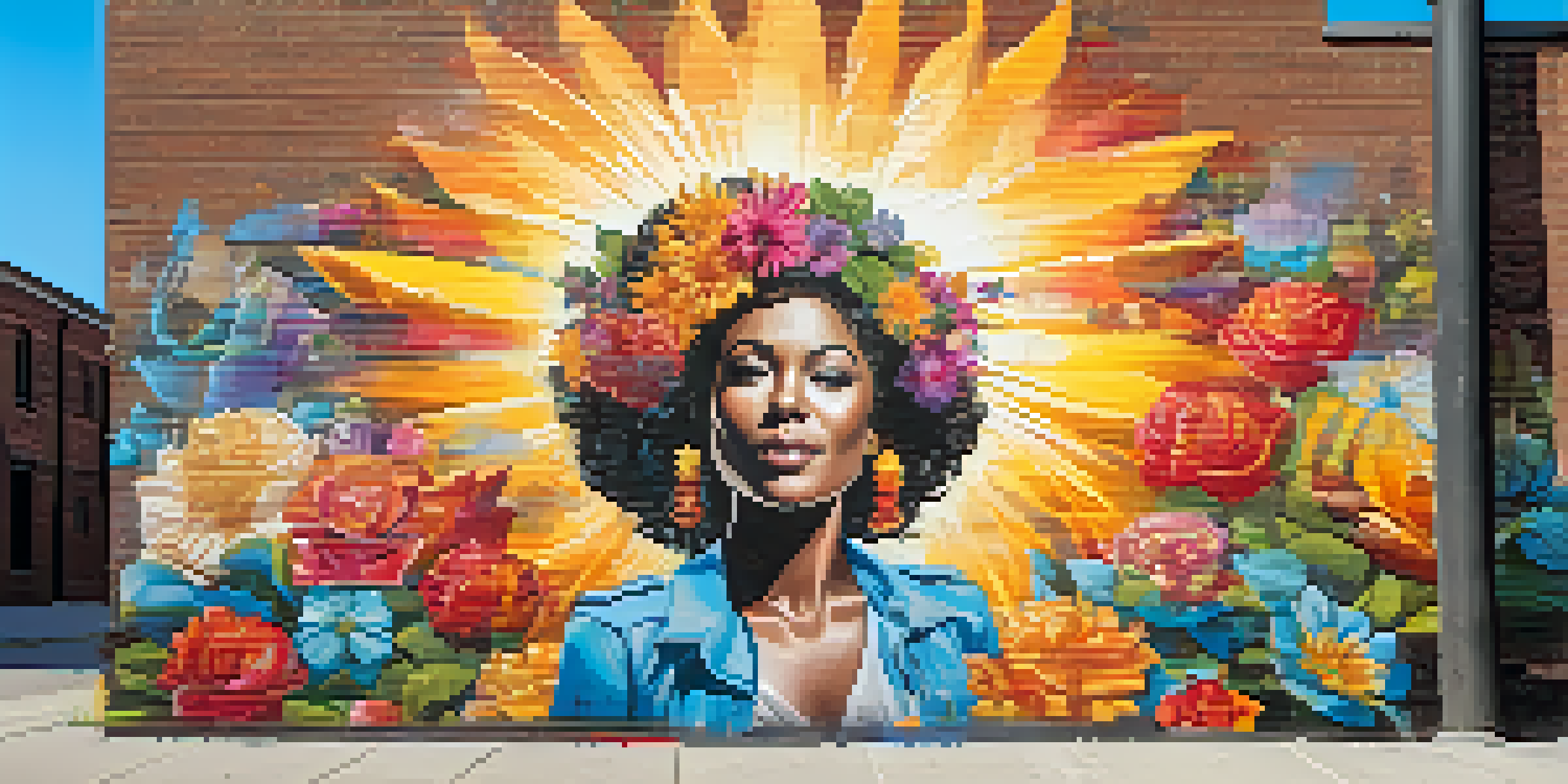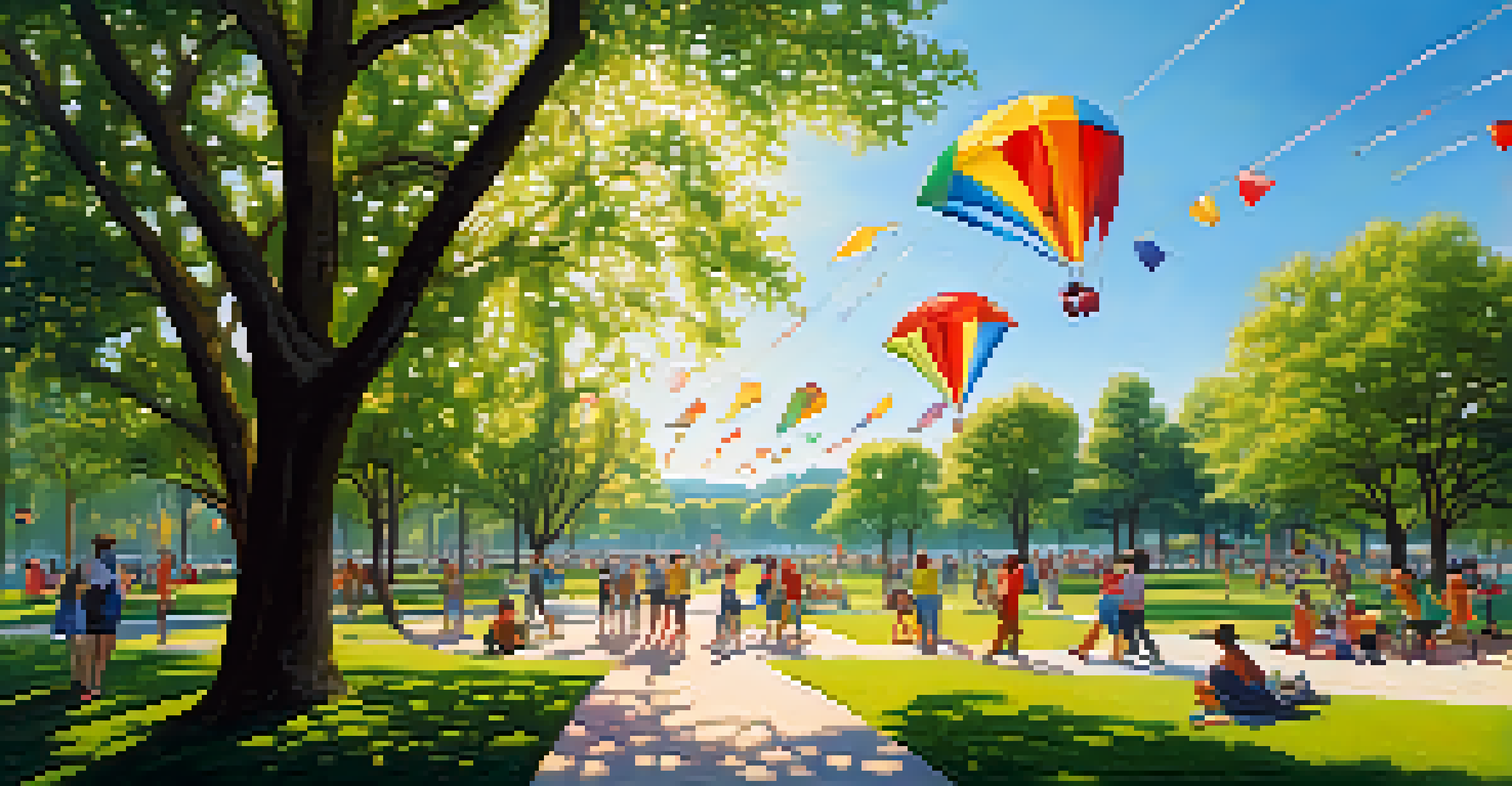The Role of Art in Political Movements Through History

The Power of Art as a Political Tool
Art has always served as a powerful medium for expressing political ideas. From paintings to performances, artists have used their work to communicate messages that resonate with the public. This ability to convey complex emotions and thoughts makes art a unique tool in political discourse.
Art is not a mirror to hold up to society, but a hammer with which to shape it.
By engaging viewers on an emotional level, art can inspire action and provoke thought. For instance, the haunting images of war in Picasso's 'Guernica' not only capture the horrors of conflict but also rally opposition against it. Such artworks can transcend language barriers, making their messages universally understood.
Throughout history, art has been a rallying cry for social change, often igniting movements that demand justice and equality. Whether through street art, posters, or songs, artistic expressions have mobilized communities and given voice to the marginalized.
Art in the American Civil Rights Movement
The American Civil Rights Movement of the 1960s showcases how art fueled social change. Music, literature, and visual art played pivotal roles in raising awareness and fostering solidarity among activists. Songs like 'We Shall Overcome' became anthems, uniting people in their fight against racial injustice.

Visual artists also contributed by creating powerful imagery that depicted the struggles and triumphs of the movement. Photographs of peaceful protests and brutal responses from authorities captured public attention and ignited outrage. This visual documentation helped to humanize the struggle for civil rights, making it harder to ignore.
Art Drives Social Change
Throughout history, art has inspired movements and fostered solidarity by effectively communicating political messages.
Moreover, literary works from this era provided insight into the personal experiences of those fighting for equality. The combination of these artistic forms ensured that the message of the Civil Rights Movement resonated far beyond the immediate context, influencing generations to come.
Art and the Anti-War Protests of the 1960s
During the Vietnam War, art became a powerful means of protest against government policies. Artists used their talents to speak out against the war, often through provocative imagery and performances. This era saw a surge in anti-war posters, songs, and films that questioned the morality of military intervention.
Every human being is an artist. The greatest gift of the artist is to be able to see things in a different way.
One notable example is the song 'Fortunate Son' by Creedence Clearwater Revival, which criticized the disparity between those who fought in the war and those who could avoid it. Such artistic expressions resonated with a generation disillusioned by the conflict, galvanizing public opposition.
Additionally, visual artists, like Andy Warhol, transformed the imagery of war into art that sparked conversation and controversy. This fusion of art and activism illustrated how creative expression could challenge the status quo and inspire collective action.
Art in Feminist Movements
Feminist movements have also heavily relied on art to communicate their messages and advocate for women's rights. From the suffrage movement in the early 20th century to contemporary feminist art, creative expressions have highlighted the struggles and achievements of women. Artwork, such as Judy Chicago’s 'The Dinner Party,' serves as a powerful symbol of female empowerment.
Through installations, performances, and literature, artists have confronted societal norms and challenged gender inequality. Feminist art often seeks to reclaim the narrative, providing visibility to women's experiences that have been historically marginalized.
Street Art Challenges Authority
Street art serves as a powerful form of political expression, using public spaces to provoke thought and spark dialogue.
Moreover, social media has transformed the landscape of feminist art, allowing artists to reach broader audiences and engage in conversations about gender issues. This evolution demonstrates how art continues to play a crucial role in the ongoing fight for equality.
Street Art as Political Commentary
Street art has emerged as a significant form of political expression in recent years. Artists use public spaces to create works that challenge authority and provoke thought. Murals, graffiti, and installations serve as visual commentary on social issues, often reflecting the voices of the community.
For instance, the work of Banksy exemplifies how street art can address political and social injustices in a way that is accessible to the public. His thought-provoking pieces encourage viewers to engage with pressing issues, from war to consumerism.
This form of art often escapes traditional censorship, allowing artists to express dissent in ways that resonate with a wider audience. As a result, street art has become an essential tool for grassroots movements, fostering dialogue and encouraging collective action.
The Role of Digital Art in Modern Activism
In today's digital age, art has taken on new forms and platforms, enhancing its role in political movements. Social media allows artists to share their work instantly, reaching global audiences and fostering connections between activists. Digital art can be easily disseminated, making it a powerful tool for raising awareness and mobilizing support.
For example, hashtags like #BlackLivesMatter have become rallying points for artists to showcase their work advocating for racial equality. Digital illustrations, memes, and videos can convey messages quickly and effectively, making complex social issues more digestible.
Digital Art Amplifies Voices
In the digital age, art has evolved to reach global audiences, making it a crucial tool for raising awareness and mobilizing support.
Moreover, virtual exhibitions and online campaigns enable artists to engage with audiences in innovative ways. This shift demonstrates that art continues to evolve alongside technology, maintaining its vital role in influencing political movements.
Art as a Reflection of Societal Change
Throughout history, art has not only influenced political movements but has also reflected societal changes. As cultures evolve, so do artistic expressions, capturing the zeitgeist of the times. Artists often respond to current events, using their work to comment on the state of society and advocate for change.
For instance, the rise of environmental art in response to climate change highlights how artists can address urgent global issues. Works that focus on sustainability and conservation encourage viewers to reconsider their relationship with nature and take action.

By reflecting societal concerns, art can serve as both a mirror and a catalyst for change. This interconnectedness between art and society fosters a deeper understanding of the world around us and inspires individuals to engage in activism.
The Lasting Impact of Artistic Activism
The impact of art in political movements is undeniable, leaving a lasting legacy that continues to inspire future generations. Artistic activism has the power to shape narratives, challenge injustices, and unite communities. As we look back on history, we see how art has been a vital force in advocating for change.
Moreover, the lessons learned from past movements remind us of the importance of creative expression in promoting social justice. Artists play a crucial role in envisioning a better future, encouraging us to dream and strive for a more equitable world.
As we move forward, it’s essential to recognize the value of art in political discourse. By supporting artists and their work, we contribute to a culture of activism that amplifies voices and fosters meaningful change.